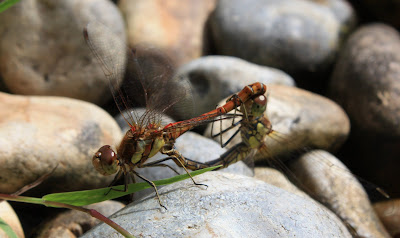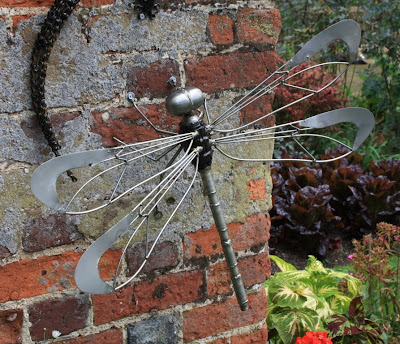Drawing ever nearer to holiday’s end, we had booked to go on the night trip to Mousa, to visit the best-preserved of all Scotland’s brochs and also experience the spectacle of Storm-petrels returning to their nest sites at midnight.
But that’s nearly a whole day away!
Until then it’s archaeology and history in equal measure, starting at a quarry in Catpund, where an outcrop of steatite was worked from the Neolithic until recent times. Steatite, or soapstone, is a soft rock, which can be worked with stone or metal tools to make bowls and plates. Once fired, it becomes hard, strong and heat-resistant, and was invaluable to the Vikings, who did not make much pottery. Still today, it is possible to see the chisel marks where round or rectangular kitchenware has been hacked out of the hillside.


Driving south, we visited Old Scatness broch, where it is likely that the Catpund quarrymen may have lived. Tucked away between the airport access road and the runway, this archaeological gem was not discovered until the 1970s, when workmen building a new road to the control tower sliced through the site. We were given a guided tour, by staff in Iron Age dress, through the various stages of building and house styles, from broch to aisled round house to wheel house. This time span encompassed the Iron Age, the Pictish period and the arrival of the Vikings, the latter being either a violent invasion or a peaceful sublimation, but no-one can seem to agree which. Scatness presented us with a much more intimate and informative experience than the Jarlshof site just down the road.
In contrast to the tiny ruined water mills we had seen all over Shetland, our next port of call was Quendale Water Mill, a large Victorian structure incorporating an overshot wheel, dating from 1867. Fully restored to working order, it offers a glimpse of the not-so-long-ago, yet seems as far removed from today's agri-business as the early Neolithic farmers.
After a bit of a snooze by the shore near Spiggie and another pleasant meal at the eponymous hotel, we headed over to Sandwick on the east coast, to await the small boat that would make the trip to Mousa. Arriving on the island at about 11.30pm, we walked for about 20 minutes to reach the broch. For a 2000 year old monument, it stands an impressive 13m high, is 15m at the base and 12m at the top. Within the double walls is a stairway leading to the parapet, the narrow steps of which required great care to ascend and descend in the dark.
But enough of all this stony talk, what we really want to see are the Storm-petrels. These relatives of the albatrosses are only about the size of a Swallow and there are 6000 pairs nesting on the island. They nest in dry stone walls, in between boulders on the beach and in the walls of the broch. Each parent takes a three day shift, sitting on the eggs, whilst their mate is feeding out at sea. Due to the risk of predation by gulls and skuas, the Storm-petrels only return to the nest at night. The birds that have been incubating the eggs call to their returning partners, so that the air is filled with a churring/purring sound that ends in a rather comical hiccup. In the half light, standing beside a wall containing dozens of calling petrels is an amazing experience.
As the moon rose, we watched as the returning birds circled the broch, looking for all the world like a flock of bats, though there are no resident bats on Shetland. As we made our way back to the boat at 1am, there was still sufficient light to convince a Skylark that it was dawn and his clear sweet song added another sonic layer to the gentle purring and weird hiccups of the Storm-petrels.



.JPG)
.JPG)
.JPG)
.JPG)
.JPG)












